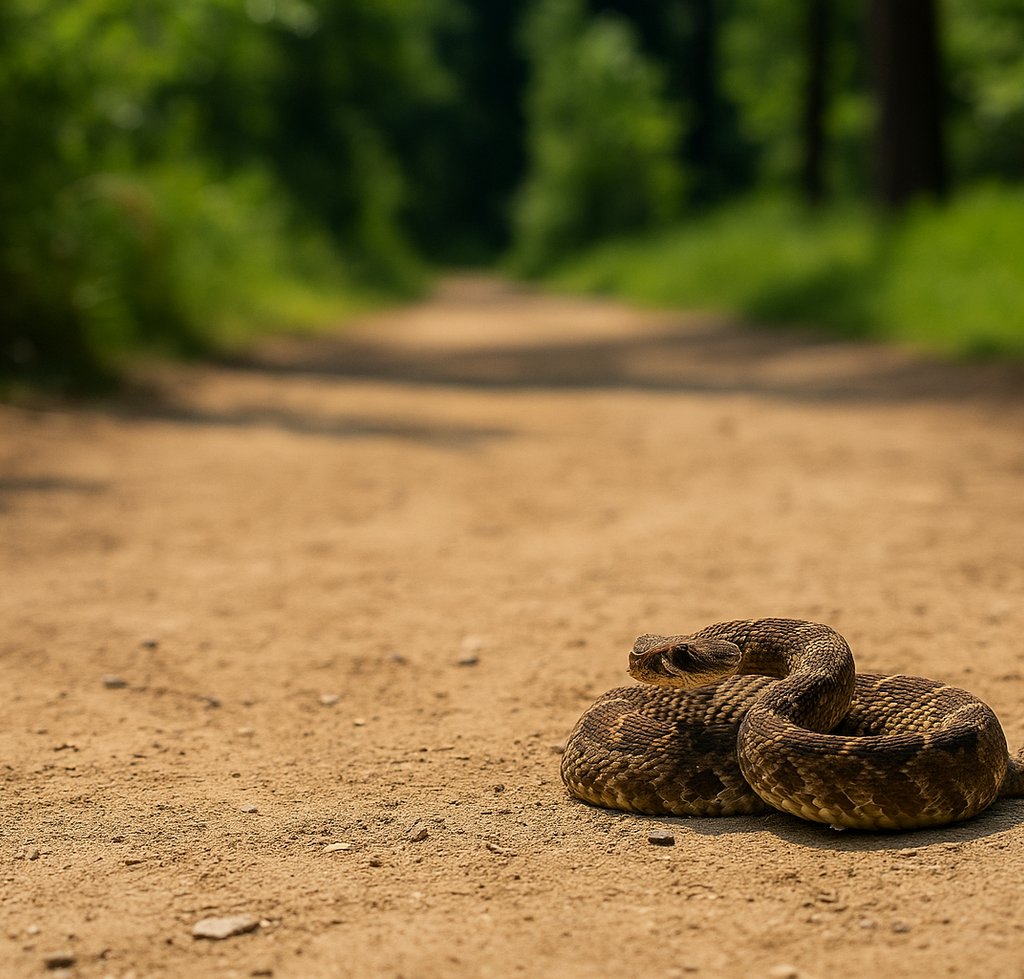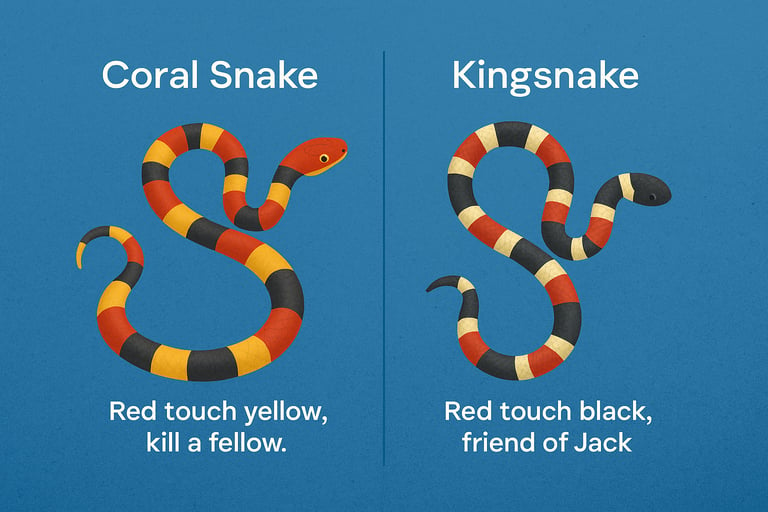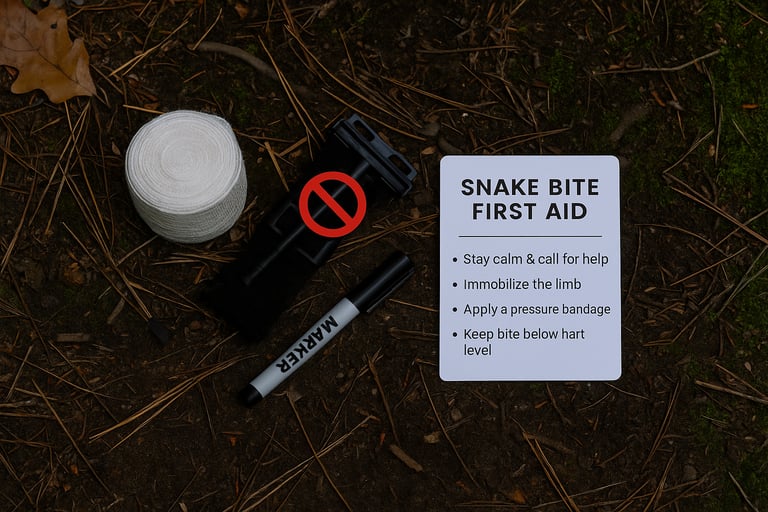Snake Safety: How to Identify and Avoid Venomous Species in the Wild
Learn how to avoid venomous snake bites while hiking or camping. This guide explains how to identify dangerous snakes, prevent encounters, and handle emergencies in the wild.


Snake Safety: How to Identify and Avoid Venomous Species in the Wild
Staying safe in the wilderness means being aware of your surroundings and that includes knowing how to avoid venomous snakes. While most snakes are harmless and shy, a small number pose a real danger if provoked. Learning to recognize the signs of venomous species, understanding their behavior, and taking preventative steps can help you stay safe on any hike or backcountry trip.
Where Venomous Snakes Are Most Common
Different venomous snake species are found in specific environments, so your risk depends partly on where you are. In the U.S., rattlesnakes are the most widespread venomous snakes, especially in the western and southern states. Copperheads and cottonmouths are common in the Southeast, while coral snakes are more elusive but still present in regions like Florida and Texas. Globally, snakes like vipers, cobras, and kraits appear in many warmer climates, especially in Asia, Africa, and Australia.
No matter your location, maintaining overall wildlife awareness will help you spot danger signs early and hopefully avoid unwanted surprises.
Staying informed about the types of venomous snakes in your area is one of the first steps to staying safe. Local ranger stations, guidebooks, and wilderness organizations often have field-specific tips or photos to help with identification.
How to Identify Venomous Snakes
Most venomous snakes share a few physical and behavioral traits, though it's not foolproof. In North America, pit vipers like rattlesnakes and copperheads have a triangular or arrow-shaped head, vertical slit pupils, and a thicker body. Rattlesnakes also have a distinctive rattle on the end of their tails.
Coral snakes look quite different, with vibrant red, yellow, and black bands. They are often confused with non-venomous kingsnakes, but the color pattern is a clue: “Red touch yellow, kill a fellow. Red touch black, friend of Jack.”
Rather than guessing, it’s safest to treat any unidentified snake with caution and keep your distance.
Preventing Snake Encounters in the Wild
Avoiding a bite starts long before you ever see a snake. Always watch where you step, especially in tall grass, rocky outcrops, or areas with dense ground cover. Use a hiking stick to tap ahead of you — snakes may flee from the vibration.
Wear long pants and closed-toe hiking boots in snake-prone areas. Stick to established trails instead of wandering through brush, and never place your hands or feet into crevices, holes, or log piles where a snake could be hiding. This level of alertness is also useful for recognizing the signs of a predator nearby, whether it slithers, walks, or prowls.
Campers should be cautious about leaving gear on the ground overnight. Snakes sometimes seek shelter in sleeping bags, shoes, or tents left open and unattended.
What to Do If You Encounter a Snake
The best rule? Don’t panic — and don’t try to handle the situation. Most snake bites happen when someone attempts to move, kill, or interact with the snake. If you see a snake on a trail or near your camp, stop and give it plenty of space. Slowly back away and wait for it to leave or take an alternate route around it.
Snakes typically strike only if they feel cornered or threatened. Avoid sudden movements and stay calm.
Responding to a Snake Bite in the Wilderness
If bitten, stay calm and keep the affected limb immobilized and below heart level if possible. Do not attempt to suck out the venom or cut the wound. Do not apply a tourniquet. The priority is to get professional medical help as quickly as possible.
Call for emergency assistance if you can. If you’re deep in the backcountry and far from help, begin evacuating calmly and steadily while limiting movement to slow the spread of venom. Try to remember the snake’s appearance, but don’t risk getting closer for identification.
Note that wilderness first aid training often includes snakebite response, and so it's definitely a valuable skillset to have or read up on before venturing into snake country.




© 2025. All rights reserved About | Privacy Policy | Terms and Conditions | Affiliate Disclosure | Disclaimer


